The last four posts have shown you the results of scanning one 4×5 TMax 100 negative with the GFX 100S. What happens if we try to use a lower resolution camera like the Nikon Z7?
That’s what this post is about.
Here’s the scanning setup with the Z7 attached:
From left to right:
- Light source
- Negative in holder atop Cognisys rail
- Compendium bellows
- Rodenstock 105 mm f/5.6 HR Digaron Macro
- Cambo Ultima II converted for Actus camera and lens mounting
- Cognisys controller
The scanning approach is to use the Cognisys rail to create a set of images to be stacked using Helicon Focus, eliminating negative curvature and alignment issues.
With the Z7, I made a single 30-exposure stack.
With the GFX 100S, I made two sets of images that I’ll show you here:
- Single stack
- Pixel shifted stack
ISO was 64 for the Z7 shotes, and 100 for the GFX 100S ones. I took pains to make the processing of the pixel shifted and unshifted series as close as possible, but there were still some significant differences because of the different workflows involved. I stacked each series with the same settings in Helicon Focus. I converted them to positives with the same settings and sharpening turned off. I exported all three to Photoshop, where I made the width of the unshifted images 19710 pixels to match the pixel shifted one using bilinear interpolation and scaled the other two images to the same dimensions using the same interpolation algorithm. I brought them back into Lightroom as developed one of the images, then pasted those setting onto the other image.
Here’s the whole negative, scanned with the Z7 — original is upscaled to 19710 pixels wide, but this is considerably reduced for web usage:
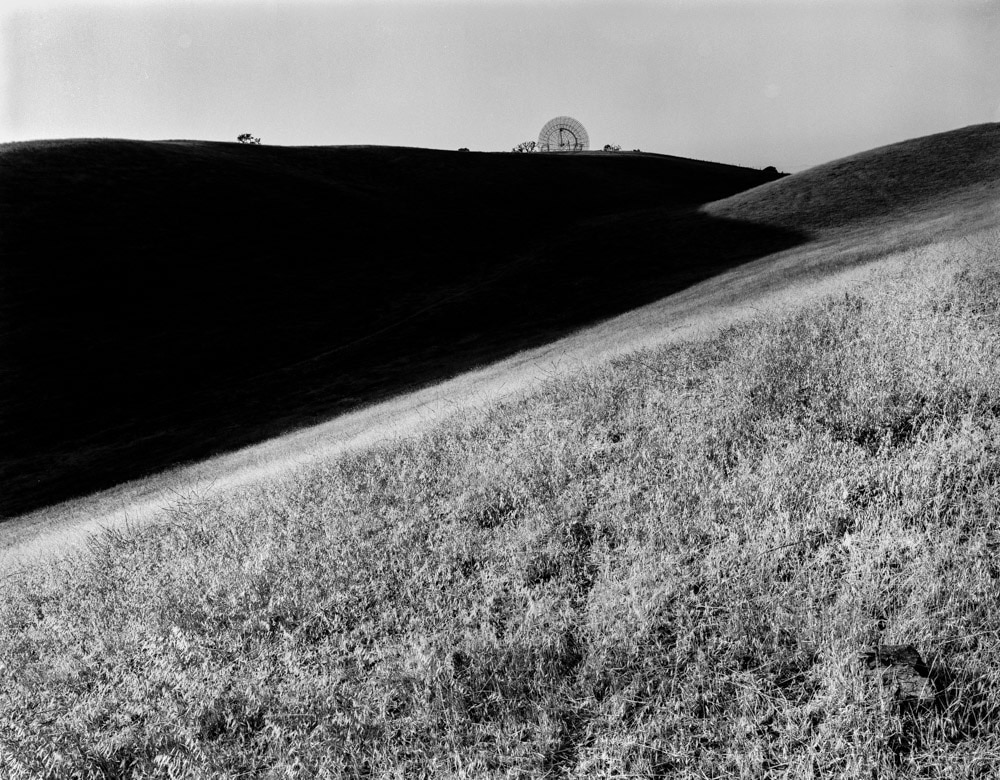
Here’s a crop of the above scaled up to 140%
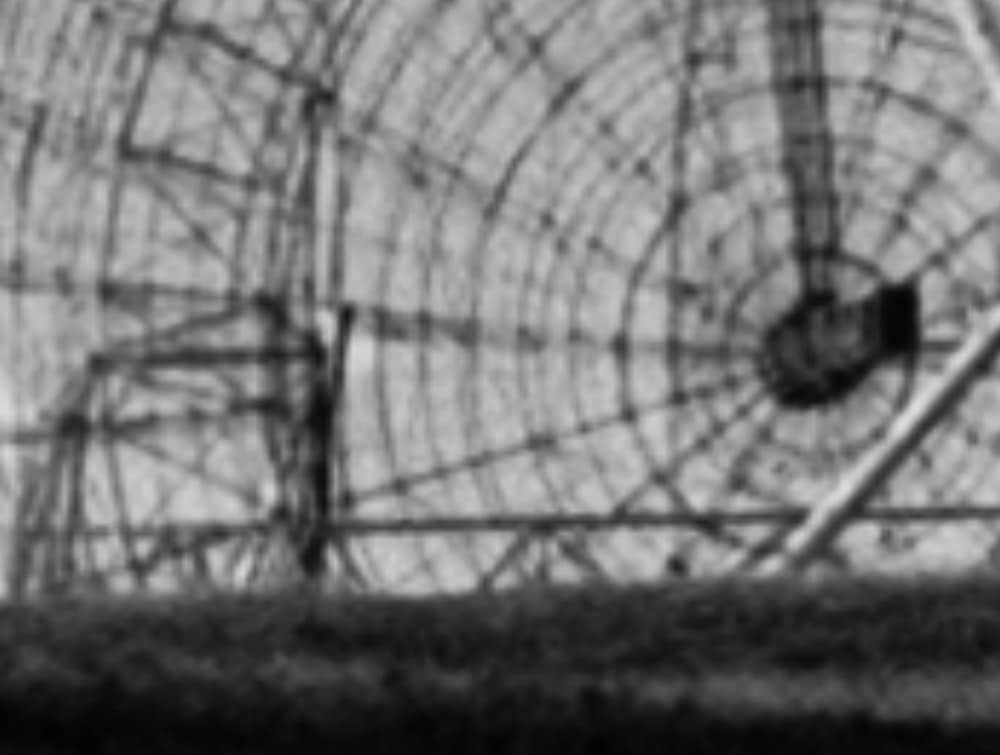
Here’s the GFX 100 image scaled the same way:
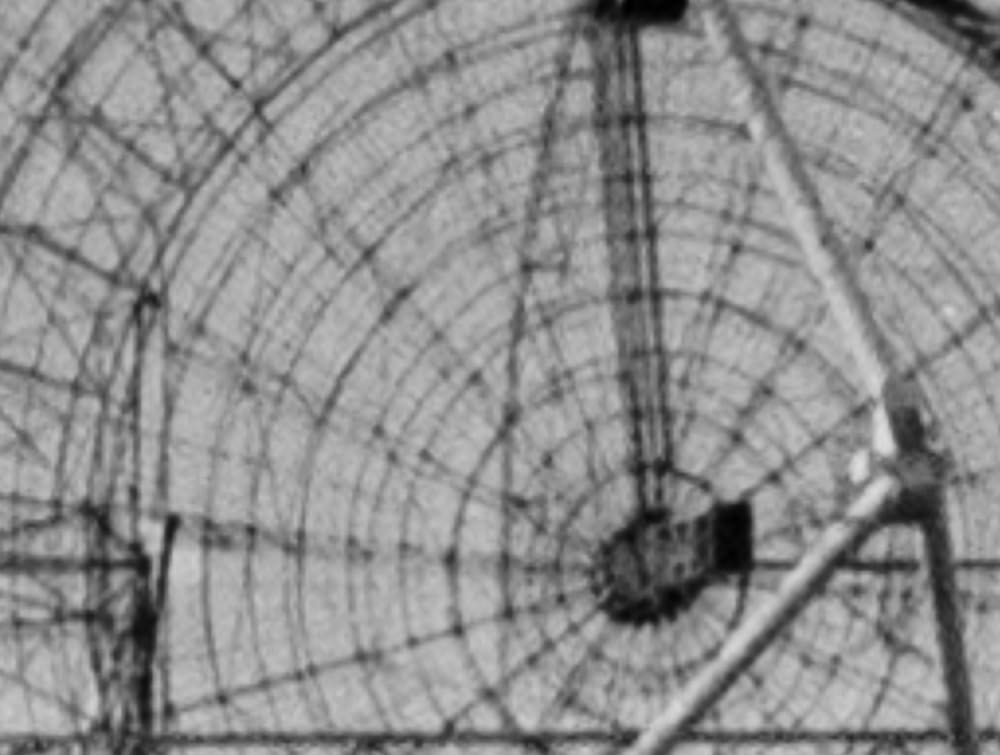
And here is the pixel shifted image cropped the same way:
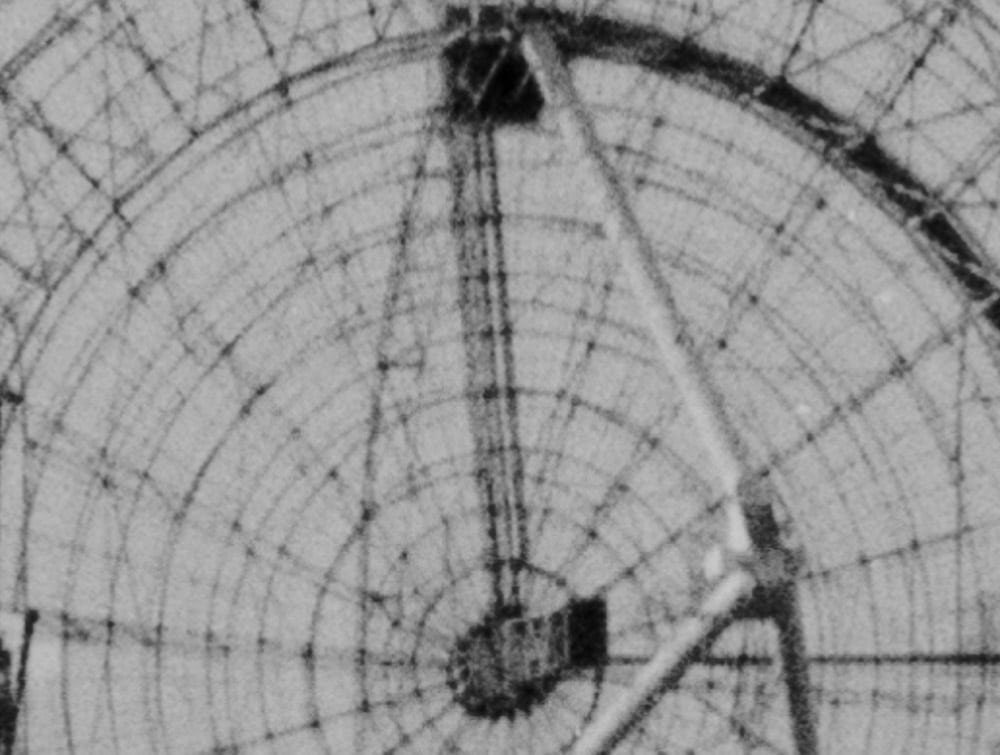
For me, the thing that shows the differences in detail is not the wires of the dish, but the details — or lack of them — in the feed horn.
Let’s look at another crop, this time at 100%:
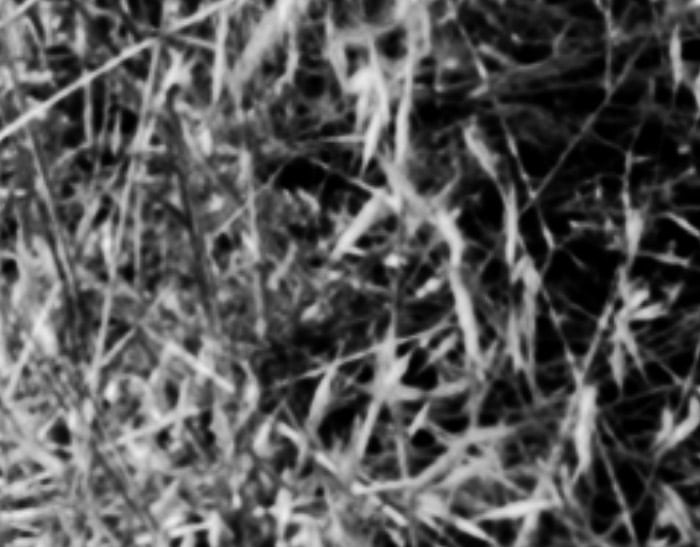
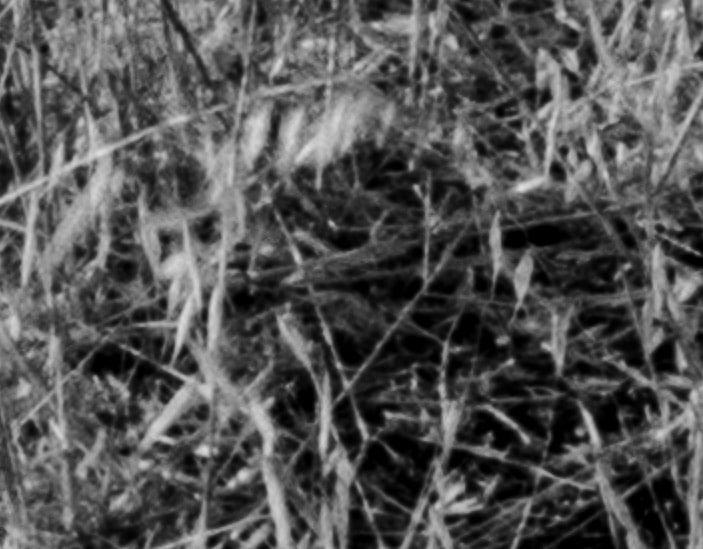
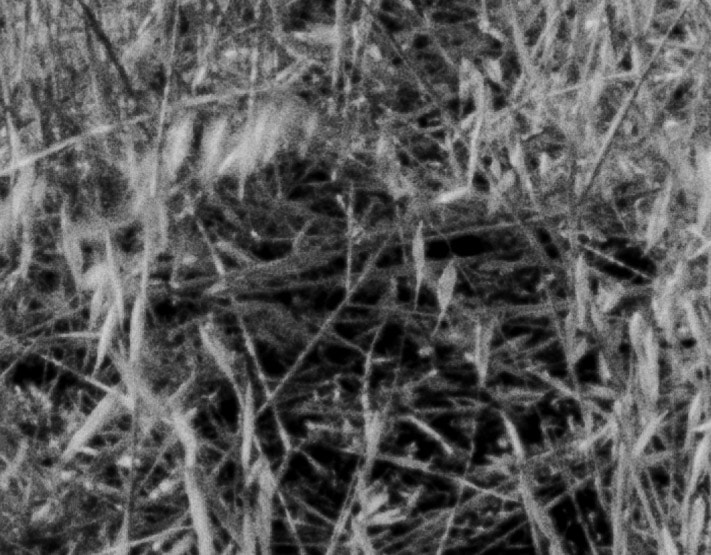
The amount of detail improvement from the Z7 to the GFX 100s is more than that achieved by going from a single stack to a pixel shifted stack with the GFX 100S.
I printed out the full image on a C-size sheet of Epson Legacy Baryta with a P800 and compared it with similar prints from GFX 100S scans.
The Z7 print didn’t look quite as good as the GFX 100S ones. The difference was most apparent in the dish. The grass looked good enough in the Z7 print that I couldn’t tell them apart if I let 10 seconds go by between looks. I’d say the Z7 scan was good enough for 17×22 inch prints. To go much bigger and get the most out of a 4×5 TMax 100 negative, you’ll have to stitch (there is no pixel shift capability with the Z7).
Next up: upscaling with GigaPixel AI. [Edit: That’s not gonna happen. GigaPixel AI makes a hash of the dish.]
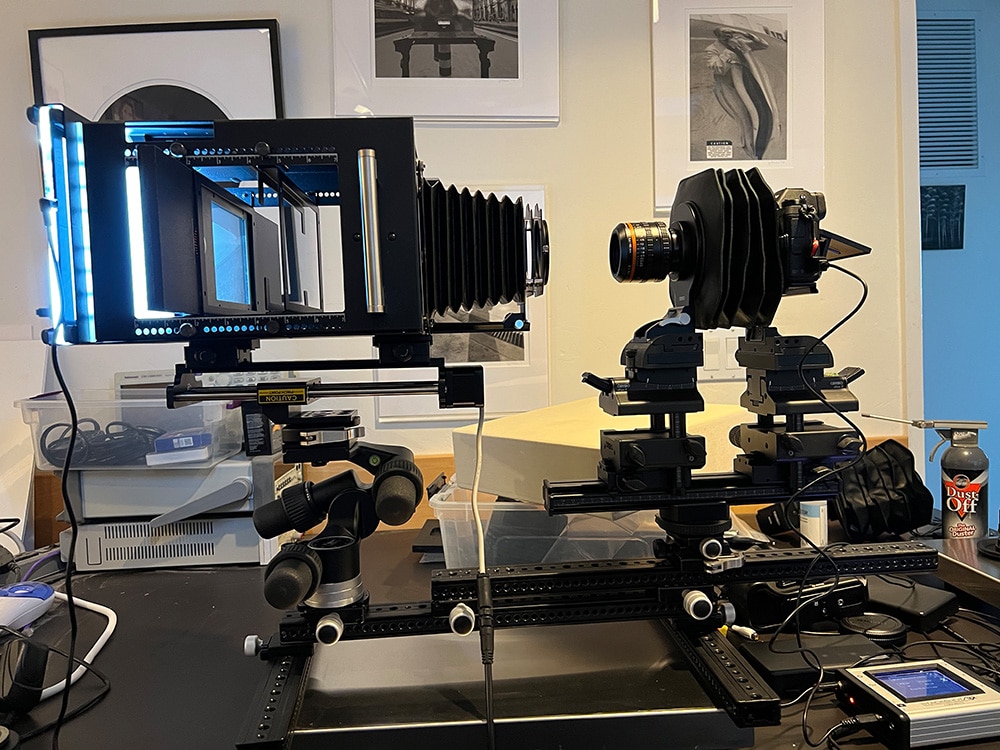
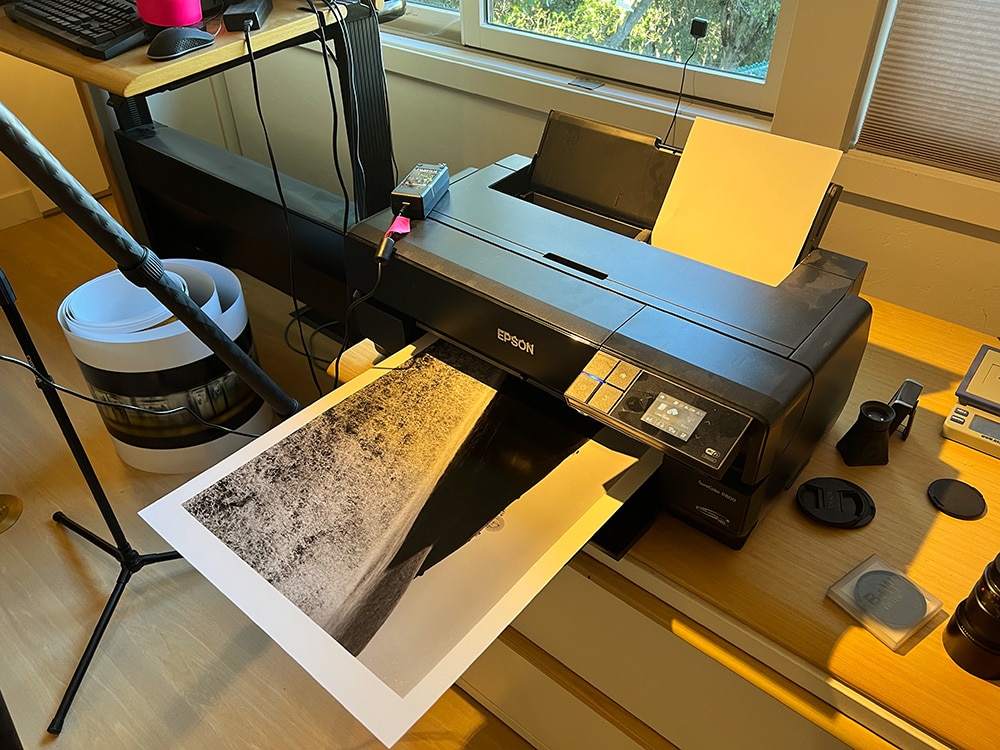
Leave a Reply